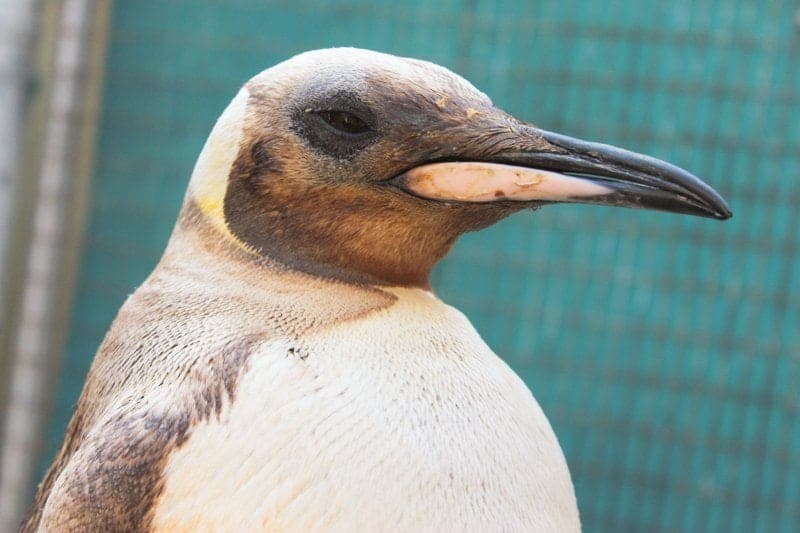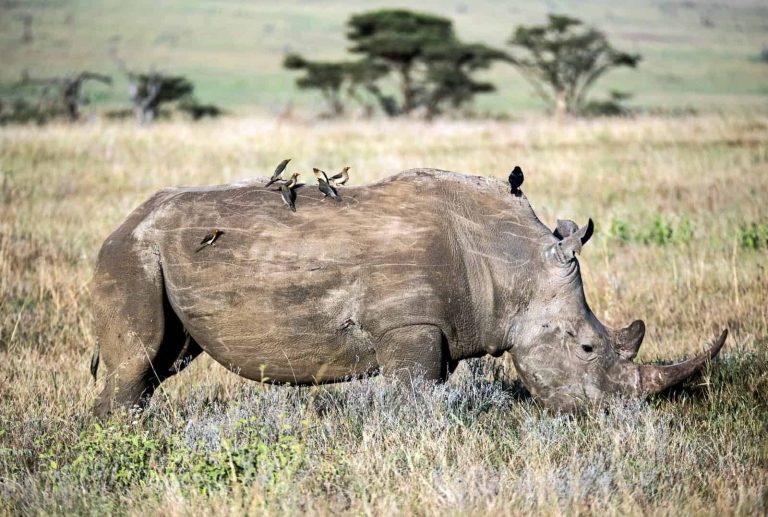Rare sighting of a King penguin washes up on Hout Bay beach, South Africa

A King penguin – rare to South African oceans – is currently under the professional care of the Southern African Foundation for the Conservation of Coastal Birds (SANCCOB) after being discovered in arrested moult on Hout Bay’s main beach on Thursday, 27 April 2017. SANCCOB was notified of the penguin’s presence by a retired marine scientist, who carefully secured the penguin until a SANCCOB official safely collected it and admitted it to SANCCOB’s seabird centre in Table View.
The King penguin, which is second largest in size to the Emperor penguin, is far from its Antarctic origin, but this species has been known to frequent South African waters. Moulting is an annual occurrence for penguins whereby they replace their worn-out feathers with a brand new set of waterproof feathers. A state of arrested moult means that this necessary process has ceased, and without waterproof feathers, the bird is neither able to survive cold waters nor hunt for fish.
While a moulting penguin may be publicly known as a natural occurrence, this is not always without complications. There are also instances where penguins do not reach optimal weight for moulting, or are swept up in strong ocean currents, off course from their destination and the swim is just too far. SANCCOB’s Rehabilitation Manager, Nicky Stander, says, “SANCCOB’s mandate is to rescue and rehabilitate, then release seabirds back into their natural habitat. As a recognised seabird rehabilitation organisation, we work closely with our partners, the Department of Environmental Affairs, CapeNature and South African National Parks to make decisions on the best course of action for seabirds on South Africa’s coastline.”
According to SANCCOB, the King penguin was admitted less than a week ago, and in addition to being in arrested moult, it has suffered a wound to the side of its beak. This suggests a possible fish hook injury and the probability that the penguin was accidentally caught by a fishing vessel and then released close to Hout Bay’s shores. While in their care at SANCCOB, the penguin will receive nutritional supplements to induce moult. Once the moult is complete, the penguin will require time in the water to waterproof its feathers and this will be assessed as part of the release criteria. A full veterinary check shows that the penguin is in good health, other than its plumage issue, and it is anticipated that it should moult soon.
The risk of the penguin being stranded on the beach would mean that it would have been vulnerable to domestic animals, land-based predators and perhaps negatively affected by human curiosity. Stander says, “We are thankful to members of the public who alert us of seabirds in distress because it enables SANCCOB to fulfil its responsibility to rescue them if in need. It is estimated that the King penguin should be released in approximately four to six weeks if it undergoes a successful moult and there are no other complications. However, the release will be under the guidance of governmental conservation authorities.”
As the moult phase is the most stressful and energy demanding time in a penguin’s life, SANCCOB will unfortunately not permit public viewing during its rehabilitation, to ensure that the bird has the best possible chance of release back where it belongs.
Author: Ronnis Daniels, SANCCOB Marketing and Fundraising Officer






